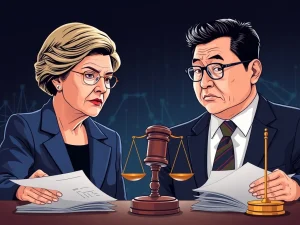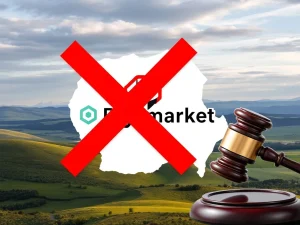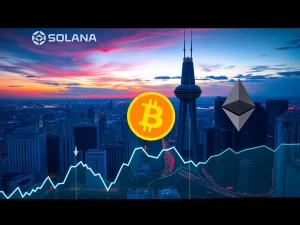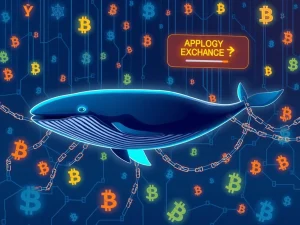XRP Regulatory Clarity: A Definitive Triumph After the Landmark SEC Lawsuit
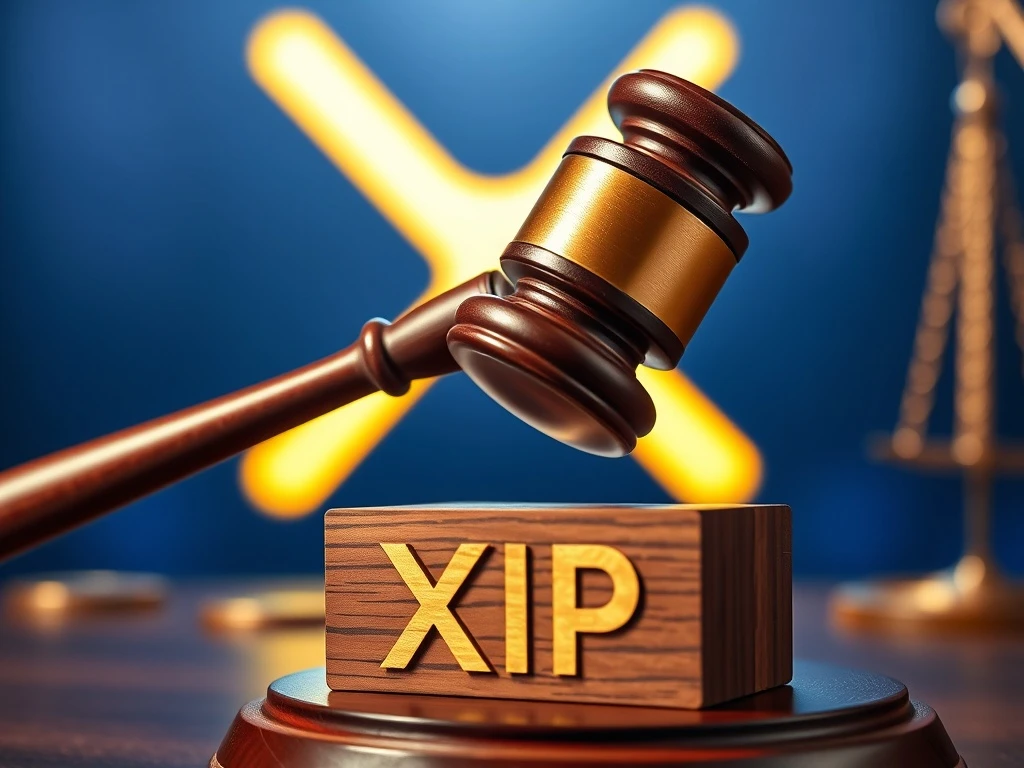
In December 2020, XRP (XRP) faced an existential threat. A bombshell lawsuit from the U.S. Securities and Exchange Commission (SEC) cast a long shadow over the digital asset. This legal battle, known as the Ripple SEC lawsuit, initially caused XRP to crash by 62%. It led to mass delistings and placed the cryptocurrency in a precarious legal gray area. However, what once threatened to destroy XRP has now paradoxically become its greatest strategic advantage. This article explores how the lawsuit ultimately forged a path to unparalleled XRP regulatory clarity, transforming its narrative from uncertainty to triumph.
The Genesis of the Ripple SEC Lawsuit
On December 22, 2020, the SEC filed a lawsuit against Ripple Labs, the operator behind XRP. The Commission alleged that Ripple had conducted the sale of $1.3 billion worth of unregistered securities since 2013. This unexpected move, occurring in the final days of the first Trump administration, caught the entire crypto industry off guard. Many feared the implications for other digital assets. The core question emerged: Is XRP a security under U.S. law? This legal challenge plunged XRP into a period of intense scrutiny and market volatility, making its future uncertain for years.
The Unwavering XRP Army: A Community Mobilized
Before the lawsuit, some cryptocurrency holders used the term “XRP army” derisively. Critics often mocked the token’s passionate supporters. Nevertheless, the SEC litigation brought this community together. It united them, transforming a loose group into one of crypto’s most organized movements. Unlike many completely decentralized cryptocurrencies, Ripple Labs operates XRP. It serves as an integral part of Ripple’s modern blockchain cross-border payments infrastructure. Therefore, operating on the right side of the law was crucial for its long-term success. Ripple CEO Brad Garlinghouse rallied supporters, stating, “We are not only on the right side of the law, but we will be on the right side of history.”
Attorney John Deaton emerged as a key figure in this legal mobilization. He rallied over 75,000 XRP holders to support the case. These individuals submitted affidavits and provided testimonies in Ripple’s defense. Over the years, the XRP army lobbied, petitioned, and coordinated social media campaigns. They kept the case in the public spotlight. Simultaneously, they pressured regulators for a fair resolution. Their collective effort significantly contributed to the eventual XRP legal victory.
Crucial Legal Milestones Paving the Way for XRP Regulatory Clarity
Ripple achieved its first significant victory in September 2022. The courts compelled the SEC to release emails from former director William Hinman. These emails revealed internal contradictions in the SEC’s approach to cryptocurrency regulation. This development struck a massive blow to their case. Particular focus centered on Ether’s (ETH) classification. Hinman had described ETH as a “native token, not a security,” citing its sufficient decentralization. Documents in the Ripple SEC lawsuit showed that SEC officials themselves disagreed with this stance. Inconsistencies within the agency raised a critical question: If ETH wasn’t a security, then why would XRP be?
A month later, Judge Analisa Torres delivered the most pivotal ruling. Her decision helped create crucial legal distinctions:
- Institutional Sales: XRP sales to hedge funds and institutional buyers were classified as unregistered securities offerings.
- Programmatic Sales: XRP sold on public exchanges was definitively not a security. Retail buyers, the court reasoned, had no expectation of profits from Ripple’s efforts.
This nuance gave Ripple a partial but vital victory. It helped establish XRP as a cryptocurrency, not inherently a security, when traded on secondary markets. Ripple continued to accumulate victories throughout 2023. In August 2024, Ripple’s final penalty was set at $125 million. This represented a remarkable 95% reduction from the SEC’s original $2.2 billion demand. These milestones steadily built the foundation for eventual XRP regulatory clarity.

The Landmark Conclusion: XRP’s Definitive Legal Victory
Appeals from both sides rumbled on for some time. However, on August 7, 2025, the case finally closed. Both the SEC and Ripple filed a joint dismissal of their ongoing appeals with the U.S. courts. Ripple chief legal officer Stuart Alderoty succinctly summarized the outcome with a post on X: “The end…and now back to business.” This declaration marked a significant moment for the entire crypto industry, confirming a definitive XRP legal victory.
The final results solidified Judge Torres’ 2023 ruling into concrete, binding legal precedent:
- XRP is definitively not a security when sold on public exchanges. This answers the critical question: Is XRP a security?
- The ruling establishes a clear methodology for determining when crypto sales are deemed securities offerings (e.g., when offered to institutional buyers).
- A $125-million fine, which is manageable for a company like Ripple, especially compared to its treasury reserves.
This outcome provided unprecedented legal certainty for XRP. It also set a potential blueprint for other digital assets grappling with regulatory ambiguity.
Market Reaction and the XRP Price Surge
The market reacted swiftly and positively to the announcement. XRP surged by 4.5% immediately, reaching $3. This marked massive growth in the coin’s value. It contrasted sharply with the dark days of December 2020, when it had dropped to around $0.20. The XRP price surge reflected renewed investor confidence. It also signaled optimism for the asset’s future. This significant price movement underscored the importance of regulatory clarity for market stability and growth.
Beyond price, Ripple demonstrated its confidence through strategic moves. In April 2025, Ripple acquired Hidden Road, a prime broker, for $1.25 billion. This acquisition represents one of the largest M&A deals in crypto history. It provides deeper trading and liquidity capabilities for institutional clients. Such a move would have been far riskier, or even impossible, without the resolution of the Ripple SEC lawsuit and the subsequent XRP regulatory clarity.
XRP Regulatory Clarity: A Strategic Advantage Unlocked
This final verdict has profoundly transformed XRP. It shifted its status from a regulatory pariah to a cryptocurrency with official judicial validation. Even top coins like Bitcoin (BTC) and Ether (ETH) must still rely on informal SEC guidance. Although no official companies operate these coins, filing lawsuits against them would be challenging. For those who supported XRP through its arduous legal battle, the outcome created a fierce bond. They now form a strong and organized user base, more committed than ever. Coming out on the “right side of history” proves their conviction after battling years of market adversity.
The legal victory also offers institutional investors the clarity they desperately required. With the lawsuit hanging over XRP, many institutions hesitated to invest in the coin. Since the July 2023 ruling, XRP has experienced a remarkable surge. It added nearly $180 billion to its market capitalization. This influx of capital highlights the immense value of legal certainty in attracting significant investment. The unique position of XRP regulatory clarity in one of the world’s largest financial markets is now its biggest win.
Global Expansion and Ecosystem Growth Post-Lawsuit
This hard-won clarity provides a sustainable moat. It will strengthen XRP through future regulatory challenges, government regime changes, and SEC leadership shifts. Other cryptocurrencies still face these uncertainties. With this U.S. regulatory certainty, Ripple can now fully focus on global expansion. The weight of the Ripple SEC lawsuit no longer holds it back. This newfound freedom could lead to accelerated partnerships across Asia, Europe, and other emerging markets. Regulatory frameworks in these regions are still evolving and often remain in a gray area.
The removal of legal distractions also significantly boosts Ripple’s initiatives. This includes the introduction of its RLUSD stablecoin and the growth of the XRP Ledger’s capabilities. Overall, this legal victory provides Ripple with incredible stability. It affords the company the unique strength to drive long-term technological development and ecosystem growth. The answer to is XRP a security is now definitively clear for public exchange sales, paving a bright future.

